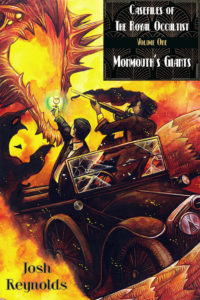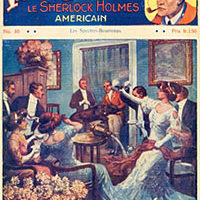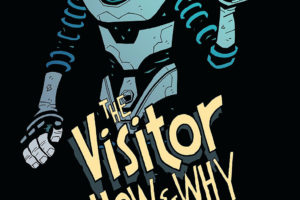 As a fan of occult detectives, I’m always looking for additional ones to read.
As a fan of occult detectives, I’m always looking for additional ones to read.
One that I have known about for several years but had yet to obtain and read is Josh Reynolds‘ Charles St. Cyprian, the “Royal Occultist,” mainly because his many stories have been scattered over various collections and anthologies over the years.
At present, there are three novels (all out of print) and about 60 or so shorter works. So finding and reading them was a daunting task.
But no more. Thanks to 18th Wall Publications, there is a new series of collections, the Casefiles of the Royal Occultist, with the first volume out now and subtitled Monmouth’s Giants. It contains 13 short stories (though two are novellas). I’m not sure how many volumes there will be, nor the publishing schedule for the series, but I hope they put out the others at a good pace. We also get a nice introduction and each story is followed by a short paragraph giving some insights to that particular story.
Now, I have read other works by Reynolds, mainly his Jim Anthony and other pulp pastiche works, but not his original works.
Charles St. Cyprian is described as a kind of cross of Rudolph Valentino with Bertie Wooster. A sort of “idle rich” type and fastidious dresser. He is assisted by his apprentice, Ebe Gallowglass, who is kind of an Emma Peel type. She is a young lady originally from Egypt. The series takes its inspiration from such occult detectives as Jules de Grandin, John Thunstone, and others. The role of “Royal Occultist” has been around since the reign of Elizabeth I and started with Dr. John Dee, who was followed by others, including Thomas Carnacki. I’ve posted on Carnacki before. He is pretty much the same here, but with him being a Royal Occultist and Hodgson as someone who wrote up stories about him (which may not have been entirely the truth). His home at 427 Cheyne Walk is actually the residence of whomever holds that office.
St. Cyprian meets Carnacki in 1913 and soon starts assisting before taking over the role towards the end of WWI. Having Carnacki die in the war seems a nod to the same happening to Hodgson. His stories run through at least 1926. There are a handful of “Royal Occultist” stories set before and after his term that hopefully will also be collected.
In looking over the list of Royal Occultist stories on Reynolds’ website, which is organized by internal chronology, it’s not clear how the stories in this first collection were chosen. They don’t follow either internal chronology or publication order. While they are arranged by internal chronology in this collection, they aren’t the first 13 stories, though we do get the first one.
We start with the story that shows St. Cyprian meeting Carnacki, then a story where they are serving in WWI and having to deal with ghouls eating the war dead. We then get stories with St. Cyprian and his assistant.
The first of these has them dealing with one of the occult groups making the mistake of “unwrapping” a mummy that is really the Black Pharaoh, Nephren-Ka, who will be returning. One of the novellas has Houdini and Arthur Conan Doyle (we know that Sherlock Holmes is a real character in this universe) calling upon St. Cyprian. I thought it interesting using these two, as Houdini was a skeptic, while Doyle was a spiritist. The story ties into past cases of both Holmes and Carnacki, as well as a certain story dealing with Houdini.
Other stories deal with werewolves, ghosts, ghouls, gods, selkies, boggart, giant serpent, Krampus, and more — but no vampires in this collection. We also meet some people and groups that will return, such as the London Tunnel Authority and Philip Wendy-Smythe.
I enjoyed this series. The stories are inventive, and you see ideas pulled from folk magic, H.P. Lovecraft, and more. I look forward to the next one. Hopefully we won’t have to wait long.




Your comments